Menus
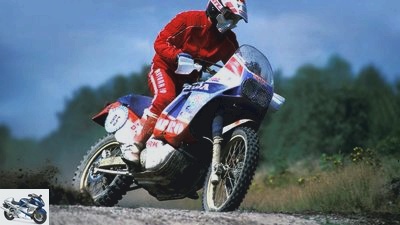
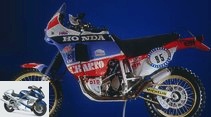
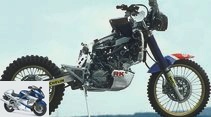
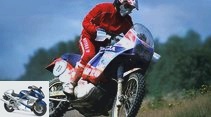
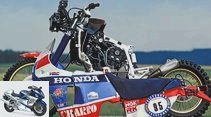
9 photos
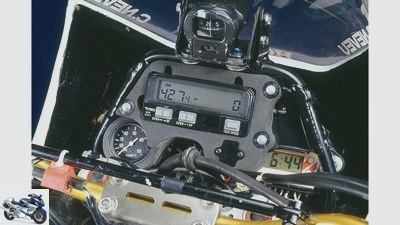
fact
1/9
On the move with the Honda NXR 750.
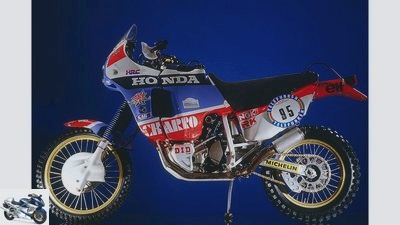
2/9
On the move with the Honda NXR 750.
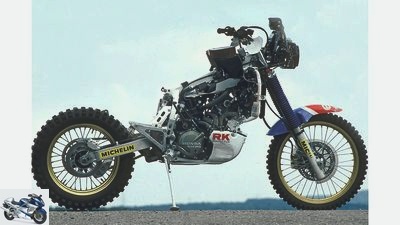
3/9
On the move with the Honda NXR 750.

4/9
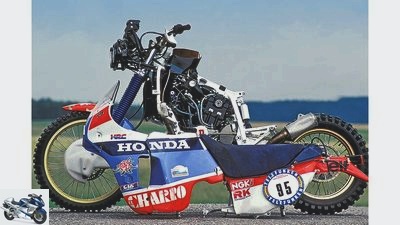
5/9
The Honda NXR 750 in all its glory.
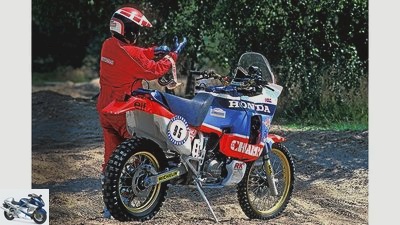
6/9
On the move with the Honda NXR 750.
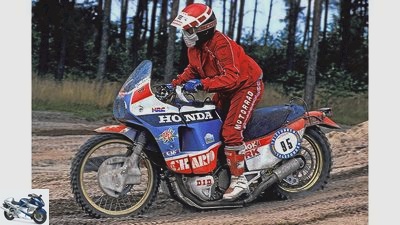
7/9
On the move with the Honda NXR 750.

8/9
Review of the Honda article.
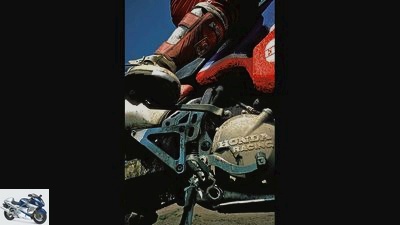
9/9
Kick twice and the NXR ran.
On the move with the Honda NXR 750
The Dominator
Content of
That was just too much for the world’s largest motorcycle manufacturer: an air-cooled boxer BMW ironed everything that got in the way between Paris and Dakar. The Honda NXR 750 should fix it – cost what it may. But first and foremost, this monster had to be overcome.
We were pretty surprised at the time. We, the enduro freaks in the MOTORRAD editorial team, who were supposed to thrash a 300,000 mark factory Honda through the sodden sand on the motocross track in Stollhofen in Baden in 1987. NXR 750 was the name of the monster with which Cyril Neveu had celebrated his fifth victory at the Paris-Dakar a few months earlier. A motorcycle developed by Honda Racing Corporation solely to speed through the Sahara, faster than anyone else. The 75 hp four-valve V2 and the very robust equipment would be up to the stressful desert ride. The pilots were supposed to float over the worst corrugated iron slopes on high-quality, handcrafted suspension elements and be safe despite all the hardships – but above all to be the first to arrive in Dakar.
Bog corpse for 300,000 marks
With 57 liters of fuel on board, weighing just under 250 kilograms, even the boldest cross-specialists in the editorial team couldn’t imagine maneuvering this trump of motorcycles through the sodden sand. Even transporting the monster was an adventure.
I found the photos in the studio brilliant. But driving with the part on the cross piste is not possible, I warned. Because you can’t maneuver five hundredweight from a seat height of one meter. Especially not where the wet sand literally runs away from under the studded tires. Five hundredweight plus driver makes a total of 330 kilograms. As much as a Honda Gold Wing, this mass could only be sunk in deep mud! If you can afford a bog body for 300,000 marks, anytime. My colleague Andy Schulz from the sports department did not give up: “Come on now, you will be able to drive the NXR 750 through the picture for a few meters, right?”
The kickstarter alone was a challenge. But already after two kicks the NXR started shooting. Enter the corridor, jump up and off you go. Shy at the beginning, with the utmost respect, faster with every lap – after ten minutes everything was forgotten. The weight, the price, the deep sand – it doesn’t matter because the Honda swept over the track with an ease that one had never expected. A motor so soft and yet so powerful that you could always and everywhere gently lift the front over every shaft, every hole. The front wheel ran like it was on rails, the drift angle could be varied as desired with the throttle hand, the gears slid into position as if by themselves, the torque was finely dosed from the clutch to the rear wheel – what an experience. In retrospect, that was the explanation why my first contact with the 650 Africa Twin felt exactly the same: confident, secure, somehow unstoppable. Just Honda.
Technical specifications
Only very rough landings brought the Honda to its knees.
Engine: Water-cooled V2 four-stroke engine, one overhead camshaft, four valves each, displacement 779 cm³, power 75 HP at 7000 / min
Power transmission: Multi-disc oil bath clutch, five-speed gearbox, chain drive
Landing gear: Single-loop frame made of tubular steel, 43 mm telescopic fork, two-arm swing arm, central spring strut with Pro-Link deflection, a 270 mm disc brake at the front, a 240 mm disc brake at the rear, tires front 90 / 90-21, rear 140 / 90-18, weight 245 kg , Leasing fee for one year: 300,000 marks
Related articles
-
On the move with six motorcycle icons of the 70s
fact 33 photos fact 1/33 Wobble candidate: In windy conditions, working with such a large brightener is not entirely without it. fact 2/33 Six correct…
-
fact 12th photos fact 1/12 Top brakes: radially screwed six-piston stoppers, ABS and integral actuation. fact 2/12 Builds compact and very narrow: the…
-
Comparison test Honda CB 650 F, Yamaha TRX 850, Suzuki SV 650 S and Yamaha MT-07
fact 21st photos fact 1/21 A huge boost to the parallel twin: the registered flat slide carburetor from Mikuni. fact 2/21 Despite the changed deflection,…
-
Bilski Top test Honda VTX 1800 Dick and Schwof Under the guise of a clumsy cruiser hides something that the world has never seen before. A thunder bolt…
-
wolf Scene: Honda CB 450 Police Highway – too fast Content of American nightmare? Encounter of the miraculous kind? A US Honda CB 450 police machine…
-
Super sports car Ducati 899 Panigale, Honda Fireblade SP Triumph Daytona 675 in the test
fact 31 photos fact 1/31 There are currently no brand new athletes. Some people therefore complain that nothing is moving anymore. Not correct! In the…
-
On the move with the Honda NR 750
Arturo Rivas 15th photos Alan Cathcart 1/15 The 32-valve is a technical masterpiece that only Honda has mastered Arturo Rivas 2/15 The NR doesn’t sound…
-
On the move with the Honda CBX 550 F2
Fred Siemer, Archive, Honda 18th photos Fred Siemer, Archive, Honda 1/18 On the move with the Honda CBX 550 F2. Fred Siemer, Archive, Honda 2/18 The…
-
Honda CB 650 F in the driving report
Photo: factory 36 photos plant 1/36 Honda CB 650 F in the driving report. plant 2/36 Honda CB 650 F in the driving report. plant 3/36 Honda CB 650 F in…
-
BMW K 1200 S against Honda CBR 1100 XX, Kawasaki ZX-12R and Suzuki Hayabusa
fact BMW K 1200 S against Honda CBR 1100 XX, Kawasaki ZX-12R and Suzuki Hayabusa The strongest temptation Ever since BMW motorcycles have existed, the K…